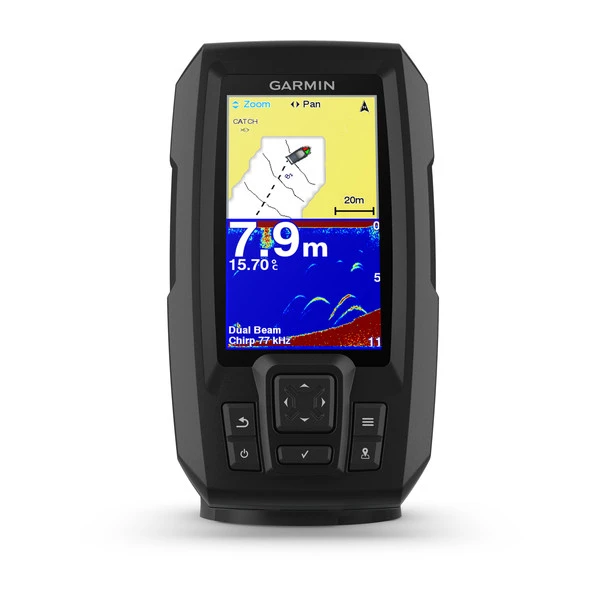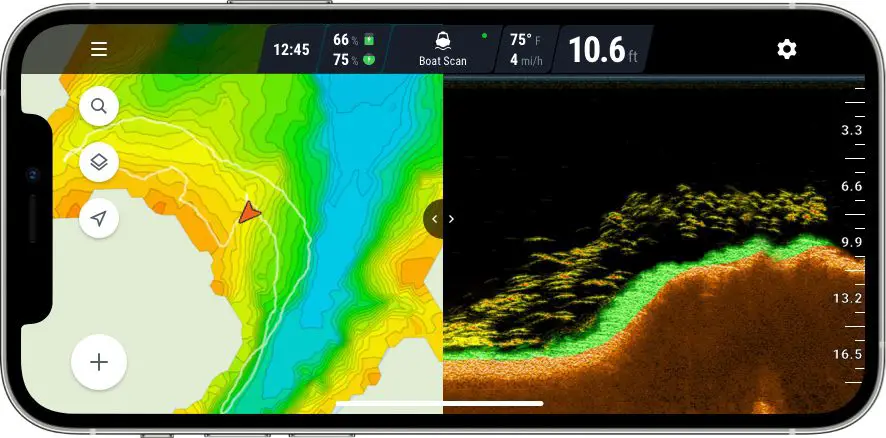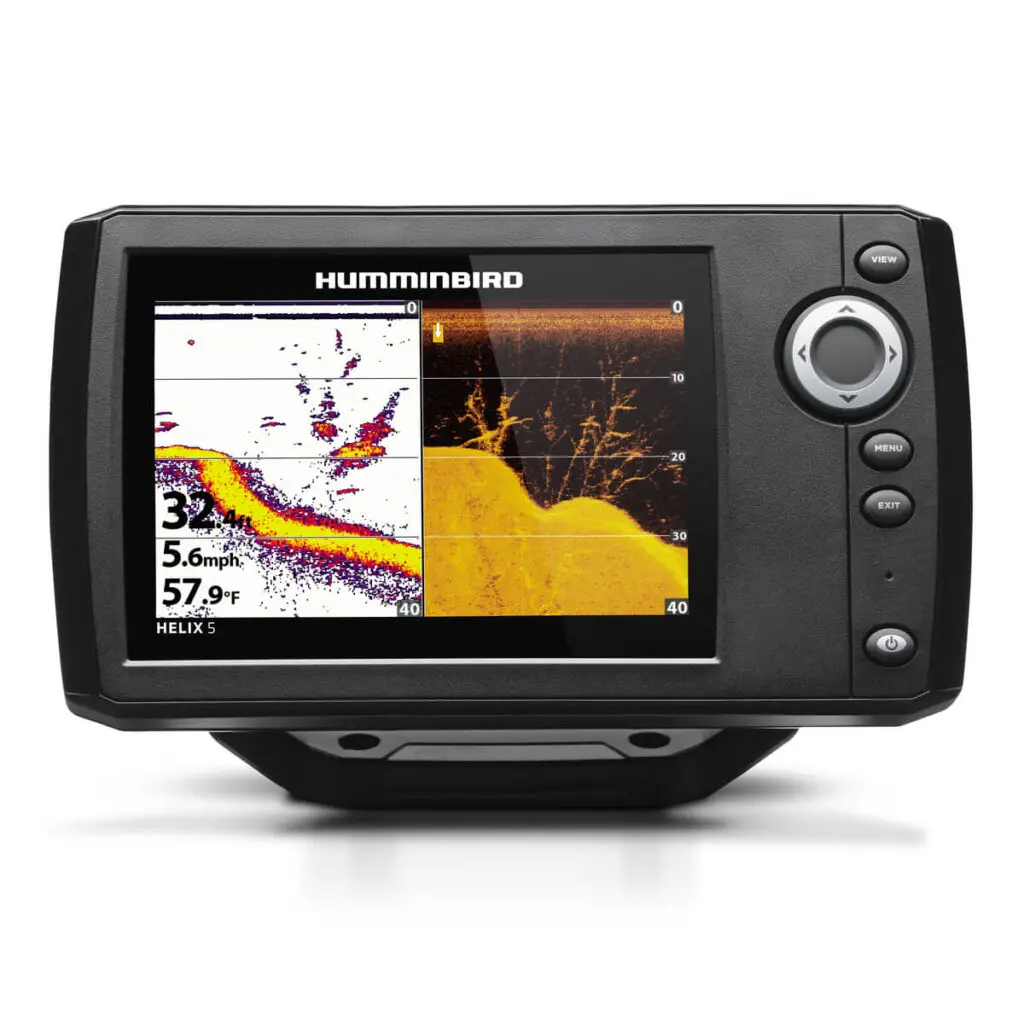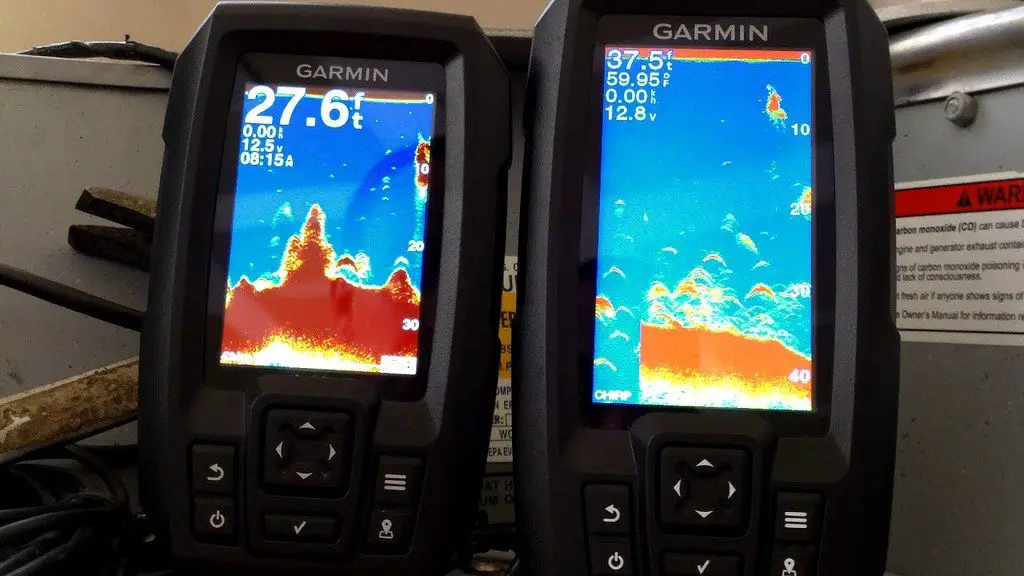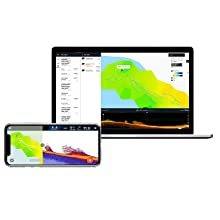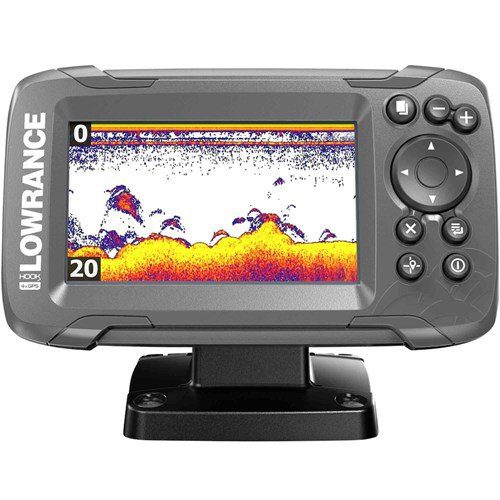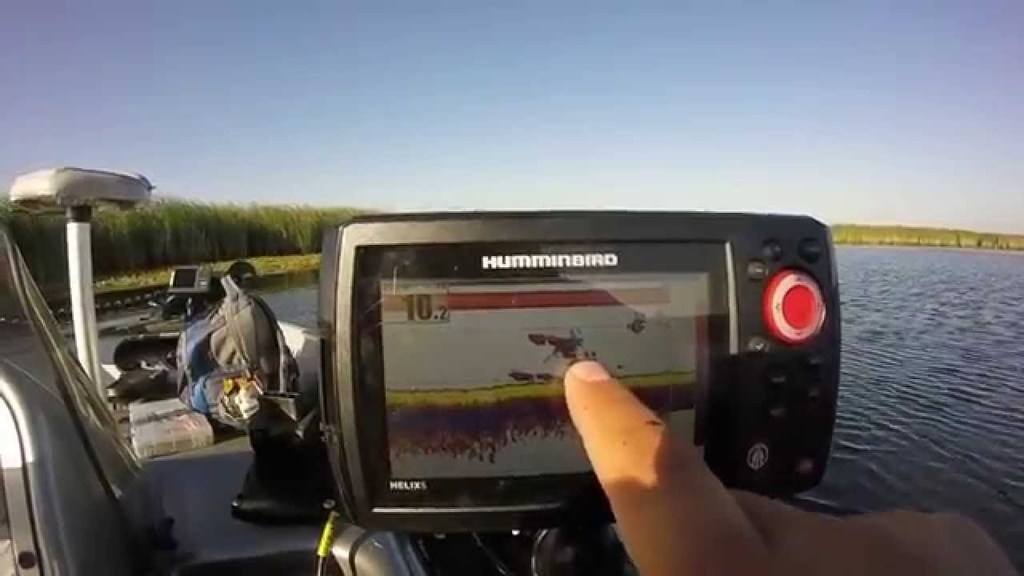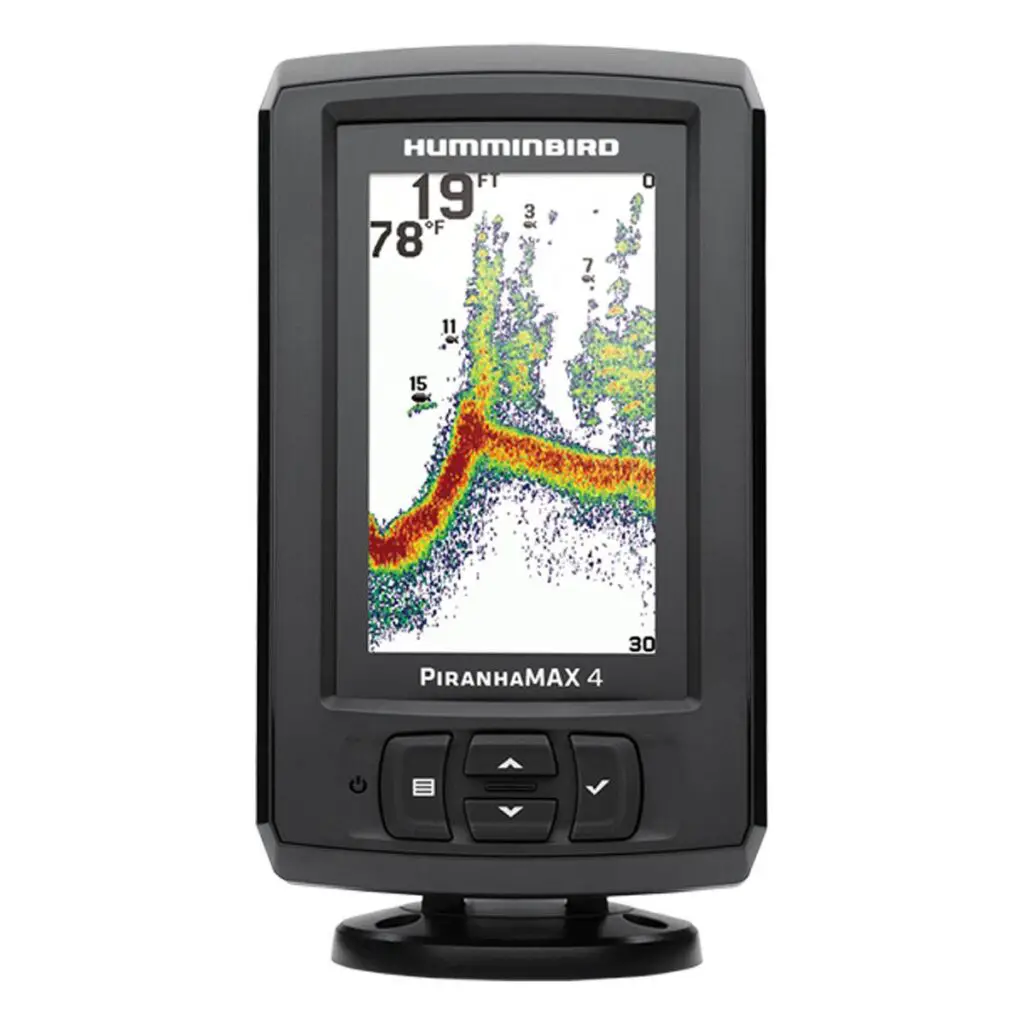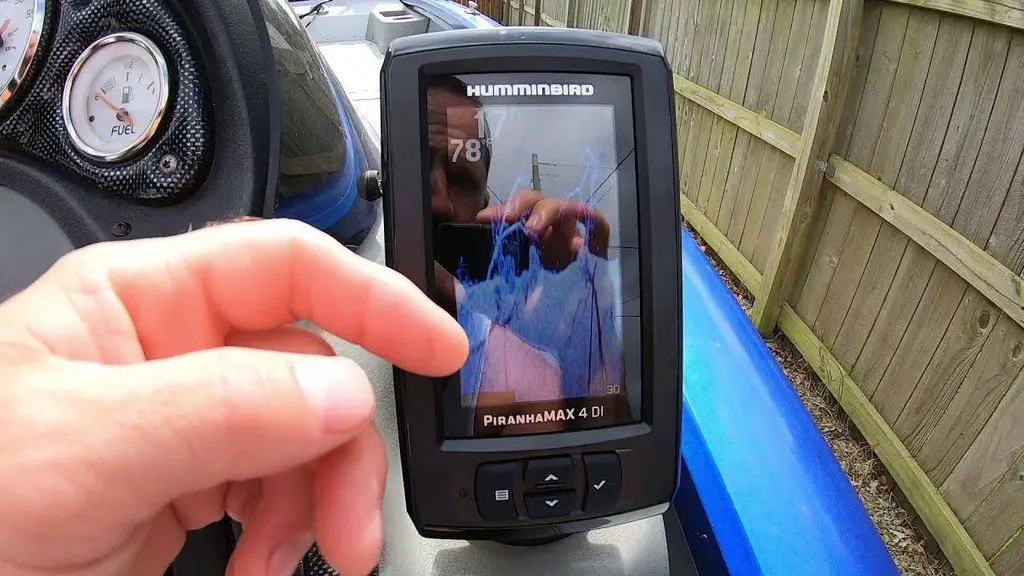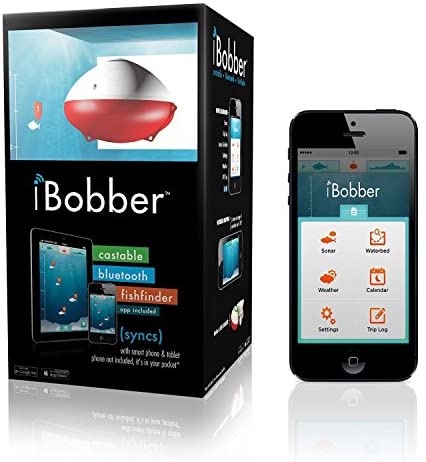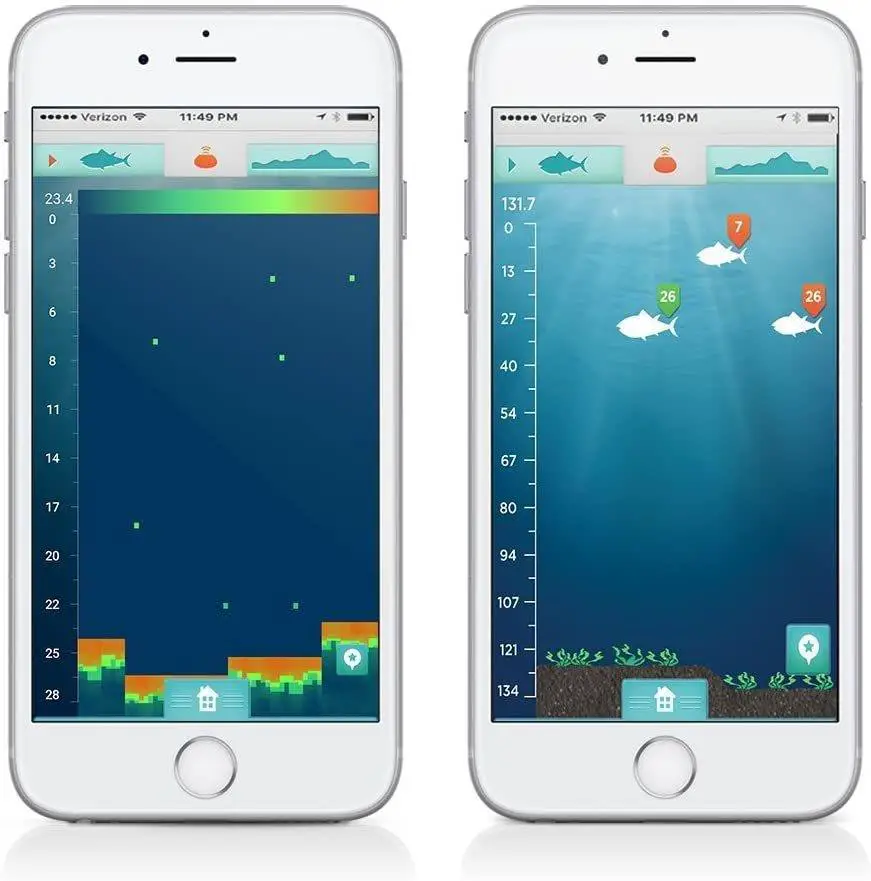The best fish finders for kayak anglers are lightweight, portable, waterproof, have modern sonar technology, and include GPS waypoints.
The Garmin Striker 4 is my top choice because it is easy to install, has an intuitive user interface, and has an affordable price tag. It features CHIRP sonar, a GPS waypoint map, water temperature, and IPX7 waterproofing. It is ideal for kayak anglers who want a modern sonar fish finder without the price tag of a premium alternative.
It can be difficult to distinguish between the cheap fish finder that doesn’t show you anything and the thousand-dollar model commercial anglers use. I have compiled this article to explain everything you need to know to select the best kayak fish finder.
If you are looking for more information on what makes a fish finder good value for money then please read through this separate article.
- High-quality imagery from CHIRP Sonar
- IPX7 Waterproof can handle splashes
- GPS Waypoint Map
- Simple Keyed Interface
- Castable Sonar suitable for Kayakers or Shore Fishing
- Built-in GPS that connects to your smartphone
- Dual Beam Sonar
- Requires a Spare Rod to Cast
Humminbird Helix 5 Fish Finder
- Dual Beam CHIRP Sonar
- GPS Chartplotter
- Clear Mode and Max Mode
- Color WVGA Display
Table of Contents
1. Garmin Striker 4 GPS Fish Finder
The Garmin Striker 4 ranks as my top choice for fish finders, offering exceptional value while including all the sought-after features of premium models.
Equipped with CHIRP sonar, it delivers precise depictions of underwater structures and fish populations. The built-in GPS ensures easy navigation and the ability to mark beloved fishing locations.
Ideal for ice fishing or vertical jigging, the Garmin Striker 4 offers unmatched versatility, empowering you to explore any environment and pursue various angling techniques.
My Impressions
My first impression of the Striker 4 was very positive. There are just so many features packed into this small package. The wide options of display sizes with the best transducers mean that you will see everything under your fishing kayak even at deep water depths.
The display also shows the water temperature, a must-have for bass anglers over the spawning season.
It has a waterproof rating of IPX7. This means it can handle 1 meter of water depth for up to 30 minutes. This is not classified as waterproof – don’t drop it overboard; it can handle rain or splashes from your paddle.
View your sonar data and information in the classic flasher format with the Display 1.9 x 2.9 inches; 3.5 inches diagonal.
It includes CHIRP transducer, tilt/swivel mount, and trolling mounting cable. But one negative is for top-performance CHIRP; you must buy a GT8/GT15 transducer separately.
Key Features
It offers a keyed interface with amazing buttons. One definite advantage is this device is extremely easy to use. The user interface is simple and robust.
- Simple keyed interface
- Available in 3.5, 5, and 7-inch models
- IPX7 Water rating
- Waypoint map
- CHIRP sonar that gives near-photographic images
- Maximum depth – 1600 feet in freshwater and 750 feet in saltwater
What I Like Most?
- Easy to install.
- Waypoint map.
- Clearvü scanning sonar.
- Convenient keypad operation.
What Could Be Better?
- This fish finder has an IPX7 water rating. This means it can withstand incidental exposure to water up to 1 meter deep for up to 30 minutes. This means it is suitable for splashes, rain, or snow but not submerging.
- Not so good in shallow water.
2. Deeper Pro Castable Fish Finder
A unique and innovative solution is a castable fish finder, which eliminates the need for a separate display and connects directly to your smartphone.
Cast the transducer into the water and effortlessly observe any underwater activity. With no mounting brackets or batteries required, it’s a straightforward approach.
Locating fish in lakes becomes a breeze with the Deeper Pro fish finder.
Effortlessly mark and revisit productive spots, and share your favorite routes with friends. This device lets you easily identify fish locations, sizes, and depths while providing clear imagery of underwater structures, bottom contours, vegetation, and hardness.
My Impressions
Deeper Pro plus fish finder is a versatile, castable fish finder for pro and avid anglers, especially with an emphasis on kayak fishing.
It generates its own Wi-Fi signal. That means you can sync it with your smartphone anywhere. It is compatible with iOS as well as Android devices.
It also comes with an easy-to-use Deeper App, which is updated monthly. One definite advantage is the company provides 24/7 customer support.
Key Features
Dual-beam sonar frequency allows overall scanning areas so that you can pinpoint fish. It syncs up to 330 ft away and scans down to 260 ft.
The data you find is saved to the cloud so you can build a detailed record of all of your fishing locations. All scans and maps are saved directly to the app so you can review them after you return to land.
Four different models are available, with the premium model having CHIRP sonar that automatically selects the correct frequency based on your water depth.
- Castable sonar that syncs with iOS/Android smartphones through Wifi
- Built-in GPS
What I Like Most
- Wireless fish finder.
- Unique versatility.
- Lightweight.
- It takes only a few minutes to install.
What Could Be Better?
- The battery doesn’t last long.
3. Lowrance HOOK2 4x Fish Finder
Lowrance boasts that their HOOK2 4X is the world’s most user-friendly fish finder. While it’s difficult to confirm this assertion, the device does offer straightforward menus and convenient access to essential features. Its auto-tuning capability ensures that users can rapidly visualize the underwater terrain.
Specifically designed with kayak fishing enthusiasts in mind, the HOOK2 4X features a 4-inch color display that presents a detailed view of the bottom. This compact yet high-resolution screen allows anglers to easily identify underwater structures and potential fish habitats while navigating in their kayaks. The simplicity of operation and clear visuals make the HOOK2 4X an excellent choice for novice and experienced kayak anglers seeking a reliable and efficient fish finder.
My Impressions
The Lowrance HOOK2 4X Fish Finder is an excellent entry-level choice for anglers seeking an affordable and efficient device.
This straightforward fish finder focuses on essential functionality without the added complexity of high-end features found in more advanced models. It efficiently delivers the core capabilities you need for a successful fishing experience.
It’s worth noting that the GPS functionality is not available in the base HOOK2 4X model. If GPS is your priority, consider upgrading to a premium version, such as the HOOK2 4X GPS.
If CHIRP transducer frequency is essential for your angling activities, the HOOK2 5X model might better fit your needs. This model offers improved sonar capabilities and performance compared to the HOOK2 4X, while still providing excellent value for the price.
Key Features
A wide range of models allows you to find the one that contains all the features you want and none that you don’t.
The wide cone angle sonar gives a wide view of the riverbed so you don’t miss any key holes or dropoffs.
The transducer is easy to install and can be installed on almost all kayaking setups.
- Transom mounted transducer
- Wide cone angle sonar
- Auto-tuning sonar for ease of use
- Optimized keypad with one-touch access
What I Like Most?
- The price is affordable, considering the features
- The wide-angle sonar gives twice the coverage of other fish finders
- The user interface is extremely easy to use
- Quick and easy setup
What I Don’t Like?
- It doesn’t have a GPS or mapping technology
- It doesn’t have advanced transducer frequency like CHIRP
4. Humminbird HELIX 5 Portable Fish Finder
Experience a crystal-clear view beneath your boat with the Humminbird Helix 5 Fish Finder.
This device is an excellent starting point if your primary objective is to pinpoint fish with remarkable clarity. Humminbird’s 2D sonar technology defies its name, delivering impressive, multi-dimensional underwater imaging. Whether you plan to fish in freshwater lakes, icy conditions, or coastal waters, the Helix 5 is equipped with the appropriate tools to excel in any environment.
The Helix 5 Series boasts an uncompromising widescreen display that visually represents the underwater world. Feature by feature, this fish finder is designed to impress even the most discerning angler. With its robust capabilities and sleek design, the Humminbird Helix 5 Fish Finder is poised to capture your heart and enhance your fishing experience.
My Impressions
Humminbird is a brand built on a foundation of innovation and cutting-edge technology, which is evident in the design and functionality of the Helix 5 Fish Finder. This device has an intuitive user interface, exceptional SONAR capabilities, accurate Broadband CHIRP, and robust mapmaking power.
The Helix 5’s standard Basemap goes above and beyond to deliver an unparalleled angling experience with enhanced detail. This heightened accuracy ensures that you have the best possible information at your fingertips while navigating unfamiliar waters. The remarkable images generated by the device result from utilizing high-frequency sound waves in extremely thin slices, creating a vivid and precise representation of the underwater environment.
With its focus on advanced technology and superior performance, the Humminbird Helix 5 Fish Finder is an indispensable tool for casual and professional anglers seeking to elevate their fishing expeditions.
Key Features
Gain an unprecedented, stunning side-to-side perspective on the underworld below the surface. In the meantime, the ultra-thin beam searches the area to the left/right of your kayak location.
It also comes with SwitchFire, a method for switching between Clear Mode and Max Mode. This lets you decide how much detail you want to see, including thermoclines, fish, or structure.
- 5 inch color display
- GPS Chart plotting with anima cartography software
- CHIRP dual beam plus sonar
What I Like Most?
- Digital CHIRP.
- Built-In Basemap.
- Color WVGA Display.
- Micro SD card slot.
What Could Be Better?
- More expensive than some of the other options but it has the features to justify it.
5. Humminbird PiranhaMax 4 Fish Finder
Humminbird are one of the top fish finding and GPS manufacturers. If you want an option cheaper than the HELIX model, consider the PiranhaMAX.
The dual-beam sonar can switch between a narrow and wide beam depending on the water depth and amount of detail you want to identify fish, structure, and contours.
The display is also on a swivel mount, so you can see it front no matter where it is mounted on your kayak.
There are also accessories available such as an attachable waterproof case which means you can still use your fish finder when it is raining or you capsize your kayak.
My Impressions
I love the user interface of all Humminbird designs and the PiranhaMAX is no exception.
This is a great entry-level fish finder for the casual kayaking angler. It shows great detail of the river bed including fish and structure, but it doesn’t come with advanced technologies like CHIRP transducers or GPS and contour mapping.
Key Features
The 4.3-inch color LCD display comes with 272 x 480 pixel resolution.
It is IPX7 water-resistant which means it can handle splashes and rain without damage but it won’t survive drowning.
Dual-beam sonar switches between narrow and wide cone angle and high and low-frequency signal.
- 4.3 Inch Color LCD Display
- Dual Beam Sonar up to 320 feet deep at High Frequency and 600 feet deep at Low Frequency
- Cone Angle of 16 and 28 degrees
What I Like Most?
- The dual sonar lets you change the cone angle depending on your depth.
- This device has many features for its price tag but doesn’t have all the bells and whistles.
What I Don’t Like?
- It doesn’t come with advanced transducer technology like CHIRP.
- It doesn’t include GPS, so make sure you aren’t going long distances from your base camp.
6. iBobber Wireless Bluetooth Smart Fish Finder
The iBobber Fish Finder is a standout choice among the portable transducer selection, specifically designed to cater to kayak or shore fishing enthusiasts. There’s no need for a permanent installation onto a hull – simply pack it in your tackle box, and you’re good to go.
One of the iBobber’s notable features is its comprehensive app with an impressive log system. This allows you to easily mark your fishing spots, track water temperature, measure depth, and record lure type, species, and photos, creating a detailed fishing trip log to help optimize your future excursions.
The iBobber Fish Finder is a versatile tool suitable for various fishing situations, including ice and night fishing. Its compatibility with freshwater and saltwater environments further expands its utility, making it an ideal companion for anglers seeking flexibility and convenience in a compact, portable device.
My Impressions
I am certainly intrigued by the iBobber. It is a favorite fishing gift whenever Christmas or Black Friday comes around. It is a cheaper alternative than some of the multi-hundred dollar devices.
It requires no permanent installation or mounting, making it extremely simple and easy to install.
I don’t like the app’s display as much – it is more like a fishing game with icons rather than a data-based view of the river bed.
Key Features
The Bluetooth syncs up to 100 feet away, so you can see at a distance, rather than just what is directly under your kayak. This is particularly useful if you don’t get close enough to structure.
The app also provides a contour mapper, fish alarms, and a built-in LED beacon.
- Castable and Portable Wireless Bluetooth Transducer
- Rechargeable battery with 10+ hours of life
- Accurate down to 135 feet
- Bluetooth to a Free App on an iOS and Android Smartphone
What I Like Most?
- The smallest portable fish finder on the market.
- This is also one of the most cost-effective fish finding options as it doesn’t come with a dedicated display.
- There is no requirement for permanent mounting – just put it in your pocket or tackle bag.
What I don’t Like?
- I prefer dedicated displays so I don’t have to worry about dropping my smartphone into the river.
- The display is more of a pictorial representation of the bottom than the raw data.
Specification Comparison
| Fish Finder | Score | Battery Life | Depth Range | Screen | CHIRP | GPS |
| Garmin Striker 4 | 5/5 | 3 Days | 1600 Feet | 7 Inch Color | Yes | Yes |
| Deeper Pro | 4/5 | 4 Hours | 260 Feet | None | No | Yes |
| Lowrance Hook2 4X | 4/5 | 6 Hours | 260 Feet | 4 Inch Color | Premium Only | Premium Only |
| Humminbird HELIX 5 | 4/5 | 13 Hours | 350 Feet | Inch Color | Yes | Yes |
| Humminbird PiranhaMax 4 | 3/5 | 8 Hours | 320 Feet | 4.3 Inch Color LCD | No | No |
| iBobber Wireless | 3/5 | 10 Hours | 135 Feet | None | No | No |
Kayak Fish Finder Buying Guide
Here are some crucial factors for good quality Fish Finders for Kayaks. Some of these criteria are must-haves and some are optional. But consider all of these features based on your own personal requirements.
Remember – the best fish finder for a commercial fisherman’s boat is not the same as the best for a kayaker. Pick the option that is right for you.
Read through our explanation of how a fish finder works for more details.
Display
The display is the second most important feature of a fish finder. It contains the screen and the user interface.
A high resolution and sharp contrast make everything easier to see and read, which also helps as the screen can be viewed in full daylight. So undoubtedly, it’s a crucial feature.
Screen Size
Screens are available in anything 3 to 6 inches (or even larger for boat-based models). For a kayaker where space is a premium, you want to get a fish finder where the display is as small as you can handle while still seeing everything clearly.
If you need reading glasses but don’t intend on taking these with you when kayaking, keep this in mind when selecting a screen size.
Resolution
The resolution is defined as the number of pixels on each side of the screen with the larger number dictating how clear the image is. This can be anything from 240 x 160 up to 640 x 640. The smaller resolution displays are significantly cheaper but are not as clear.
Don’t be tricked by the low price tag of a low-resolution display if you can’t see any fish or structure on it while paddling up the river.
GPS
Yeah, it knows it’s an advanced feature and hard to find on a small budget. But the good news is some manufacturers have designed the fish finder with a GPS at a very reasonable price. So look for whether the fish finder you choose has this feature.
This is particularly useful if you are going in an ocean kayak out to sea. Knowing exactly where you are and where you are going is a safety feature and allows you to fish in hot spots indistinguishable from the water surface.
GPS can also be helpful if you travel long distances in your kayak up a winding river and must find your isolated campsite.
Transducer Type
The transducer sends out the signals of sonar that find the fish. This feature allows you to mount on your kayak. With upgraded fish finders, you can use several cone angles to send deep and wide signals.
The transducer is the most important feature of your fish finder. It provides the accuracy and information that is shown on your display. Selecting the correct transducer for your water depth is critical for the high performance of the entire unit.
Signal Frequency
The frequency of a fish finder is normally one of either 50, 83, 192, 200, or 455 kHz.
Generally the shallower the water you are fishing in, the higher the frequency you require.
No matter if the frequency is low as 50 kHz, which may offer a vast angle for the signal. The good news is nowadays, fish finders brands offer several frequencies so you can easily switch from low to high frequency.
There are also four different types of frequency including High, Low, Dual, and CHIRP.
High Frequency
High-frequency signals are most suited for shallow-water fishing locations. This gives much information at close distances but doesn’t penetrate the water as far.
Low Frequency
Low-frequency signals are best suited for deep water as they can penetrate the water more easily, but they don’t carry as much information so the image isn’t as crisp and clear as high frequency.
Dual Frequency
Dual-frequency fish finders allow you to switch between High and Low Frequency depending on what you need at any point in time. They are the best of both worlds.
CHIRP
CHIRP stands for Compressed High-Intensity Radar Pulse. It is the most superior technology for transducers that changes between frequencies to provide the highest accuracy regardless of the water depth.
If budget is no question, always go with a CHIRP fish finder.
Cone Angle
One of the key criteria in any fish finder’s specifications is the cone angle. This can be anywhere from 10 to 65 degrees, which is a very wide range.
Transducers have been designed to send out multiple beams simultaneously.
Fish Alarm
Some fish finders come with alarms that ring out when they find fish. This is called a fish alarm. If you are fishing in a location that is full of large healthy fish then this can be extremely annoying, however, if you are desperate for even the smell of a fish then I would recommend turning your fish alarm on.
Water Depth
The depth you are fishing at changes the type of fish finder you need. If you are fishing in deep holes or in the ocean then you will need a down-imaging sonar. This will give the highest accuracy at depth.
If you are only fishing in shallow lakes or rivers then a side-imaging fish finder is a better option. This will show more water underneath your kayak and help you to find the best locations to cast a lure.
Water Temperature
Some fish finders will display the water temperature in the top corner. This is particularly useful when fishing for bass around their spawning season. Many recreational fish species change their behavior and location based on the water temperature.
This feature in your fish finder and knowing how your target species behaves at different temperatures can be the difference between a day paddling and catching fish.
Power Source
If you are looking at the large, high-end fish finders, they are generally hooked into the boat’s electrics and are powered directly from the 12V batteries. This is unsuitable for a kayak when space and weight are premium.
You will want to select a fish finder that uses internal, rechargeable, or replaceable batteries.
Kayak Mounting
A key consideration is how you will mount the display and the transducer of your fish finder onto your kayak. Some high-end fishing kayaks come with their own transducer mounting locations.
Some kayaks also feature scupper holes that allow you to pass the transducer through the hull. Ensure you understand how to mount your fish finder before purchasing.
You might also want to pick a fish finder that suits your kayak. Old Town and Ocean Kayaks have been designed to fit Humminbird Transducers, while Hobie and Wilderness Systems kayaks are better suited for Lowrance mounts.
If you don’t have any dedicated space for a transducer mount and a display mount, you might want to consider a portable fish finder with a castable transducer. These often Bluetooth to your smartphone. Just toss the transducer into the water and see what’s underneath you.
Finally, you can mount your transducer to the transom either at the rear or stern of your kayak. This can make them vulnerable to damage from any accidental collisions.
Wrapping up
Undoubtedly finding the best fish finder for kayaks on a tight budget is quite difficult. And honestly speaking, you might be compromising with some handful of features.
In this case, you can trust this fish finder list. I put endless effort into picking the best one within a reasonable budget. Each fish finder has entered the list due to their top-grade performance.
But my personal favorite is the Garmin Striker – a portable and smart piece of equipment that just amazed me with superior quality even an affordable price tag.

